Infrared or ‘IR’ photography employs camera sensors that are sensitive to infrared light, a wavelength that is invisible to the human eye. By making this invisible light visible, IR photography can capture an unseen world of colours and textures.
Photography projects, eh? If the foundation for this one was Rubber Soul, and Sergeant Pepper was the mortar, then Hot Rats became a keystone.

Robert Freeman’s fisheye-like image for Rubber Soul by The Beatles was the album cover that kick-started my love of this 12’’ square medium. Carrying an album to school became something of a badge of honour. The sight of the Sergeant Pepper LP, tucked under Chris Hanson’s arm on the 28 bus to Hanging Heaton, certainly impressed this fifth former. LPs and their sleeve art became a fascination which stays with me to this day.
After passing my finals, dad gave me £5, and it was quickly exchanged for a copy of Hot Rats by Frank Zappa. Photographer Andee Nathanson’s infrared graveside pinks and the astonishing appearance of model Christine Frka was truly arresting. To say my father was unimpressed was something of an understatement… I loved it, though; an interest was germinating, and my collection of infrared album artwork grew.
Photography became a serious interest. Joining Wakefield Camera Club, I began to relish the diversity of photographic styles. A zoomed image entitled ‘Tempus Fugit’ sticks in my mind. I began entering a few competitions, appreciating the critique and consequent development of my own skills. I was pleasantly surprised when my ‘slide sandwich’, ‘Face of the 80’s’, received a YPU acceptance.
Professional commitments lead to a long club break. And then, retirement arrived, bringing with it the time to indulge in my hobbies. I acquired a digital camera and was introduced to the mysteries of digital processing. I rejoined Wakefield Camera Club and slipped back into the world of club photography.
Here encouragement and ideas flowed. I bought a photo printer and started dabbling in the black art of home printing.
My interest in infrared photography was rekindled by a visiting enthusiast, and then the flames fanned when I attended a day at Selby Camera Club with the photographer Paul Gallagher. He argued, that for him, infrared was not about gimmicky effects and curious colour shifts, but a tool for exploring monochromatic tones. A 720nm infrared filter was fitted to one of my cameras and I was all set.
Then 2020 happened, giving me the idea and opportunity for a long term project. I would use my adapted camera to capture seasonal changes in the landscape. This camera went everywhere with me and I loved the sense of expectation as the computer worked its magic converting the files to monochrome.

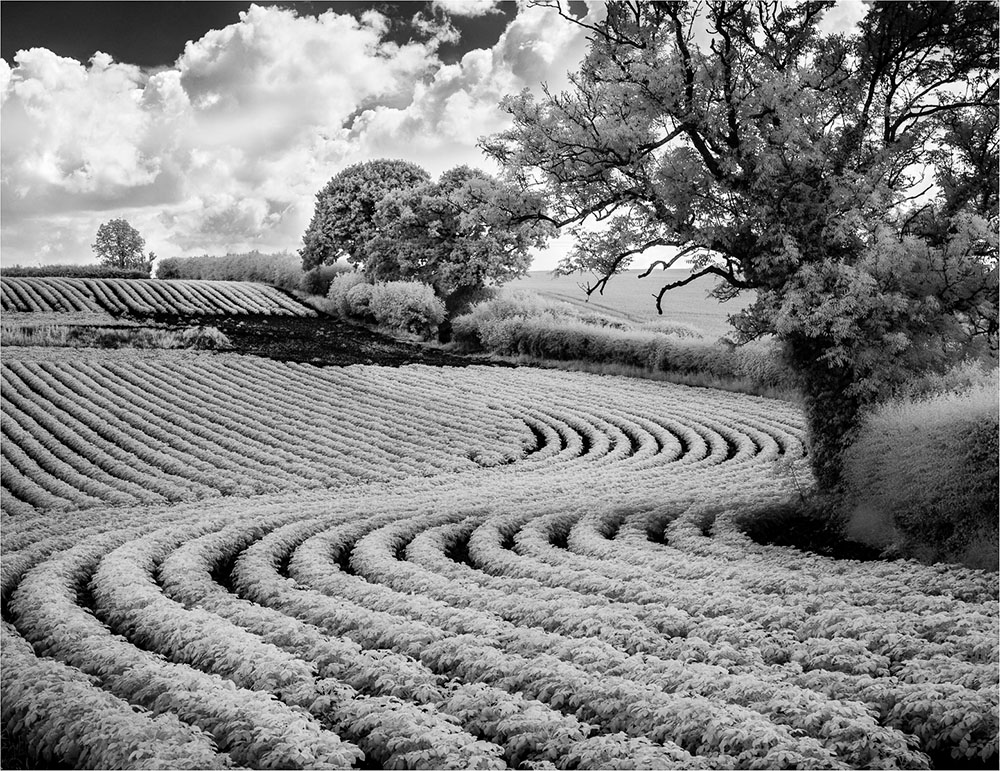

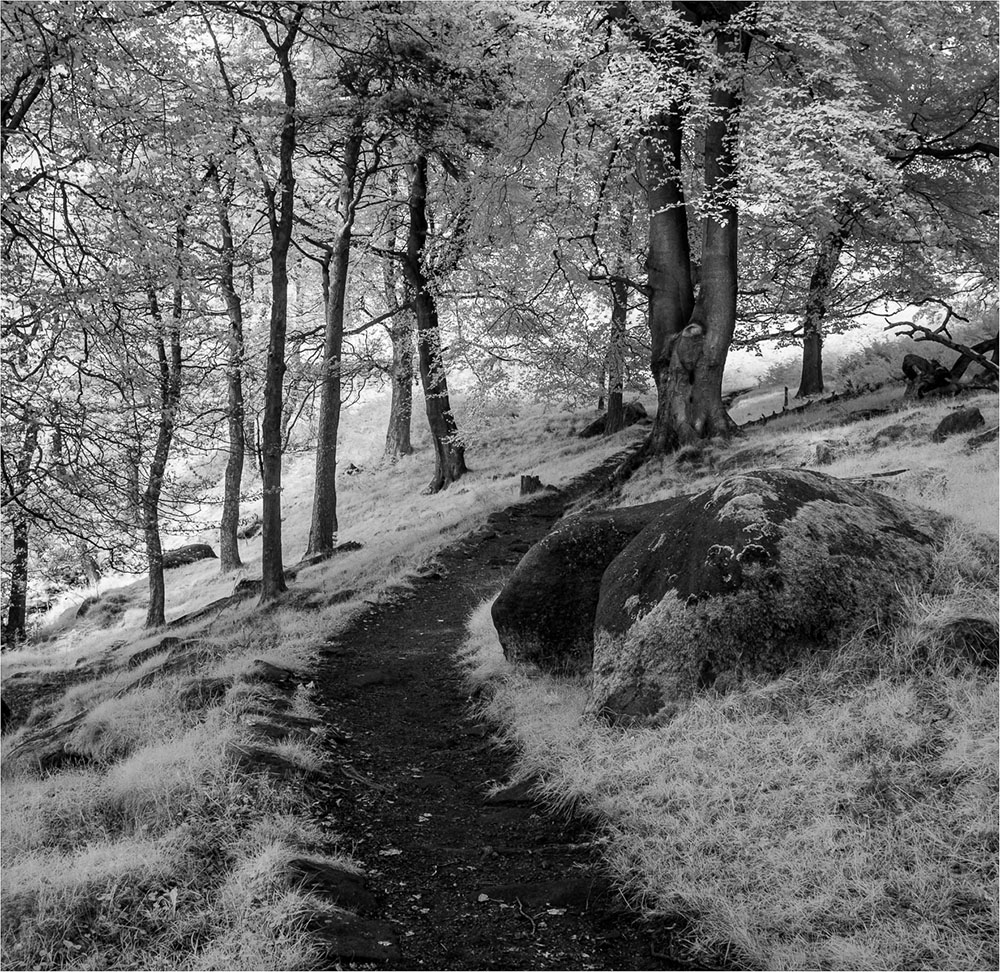
With our club in lockdown mode, we began holding our meetings via Zoom. It was decided to give members the opportunity to showcase their work. I offered to take one of the slots and put my infrared project to work. Into the Red was born. I presented a sequence of images taken over 12 months. All were taken locally except for a few when there was lockdown easing.



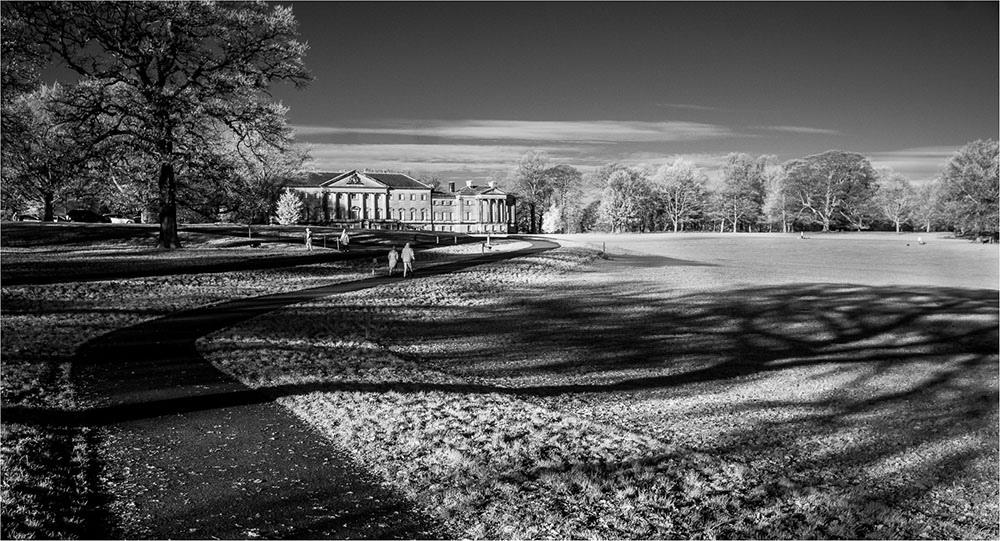
Personally, I am satisfied with the result. Thinking back to Paul’s premise for using infrared, I would now agree. This process can, in its own distinctive way, help to define tone, texture, line, light and form. Avoiding those ghostly pale tones, which might characterise infrared images, is not altogether possible. There is always the chance of the ‘frost in summer’ effect.
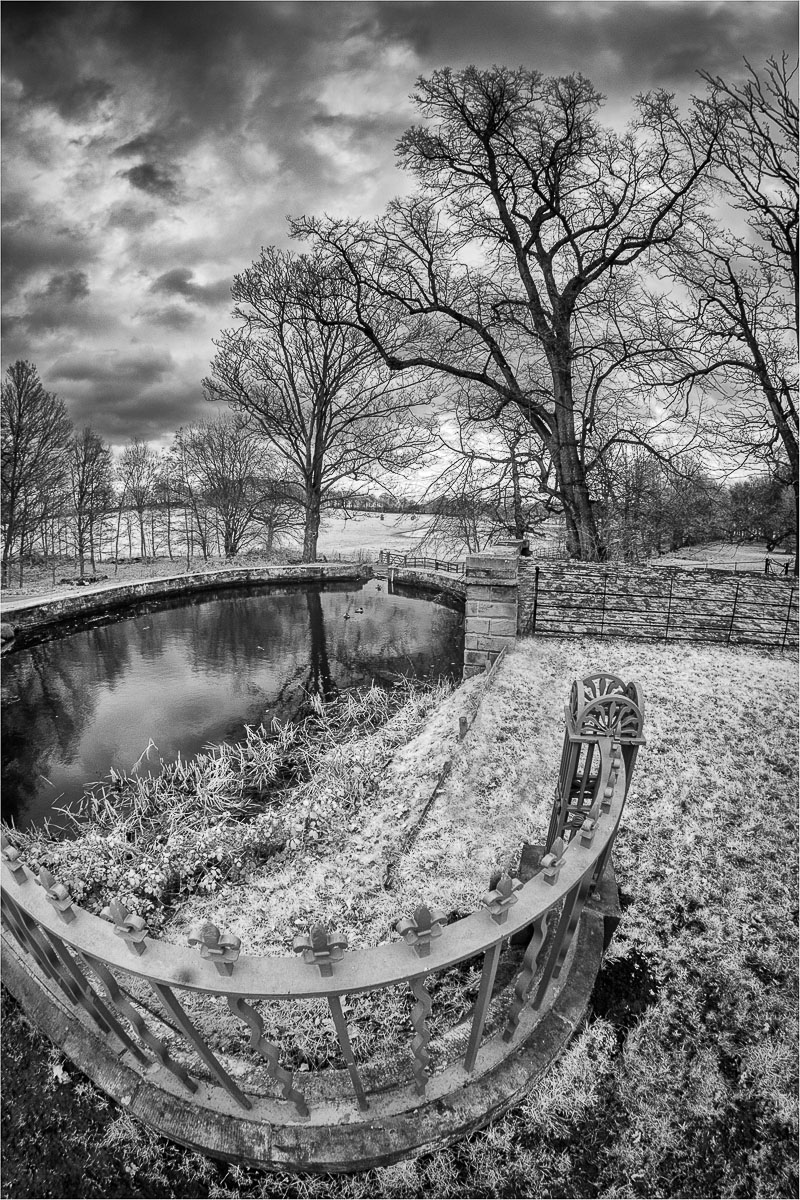
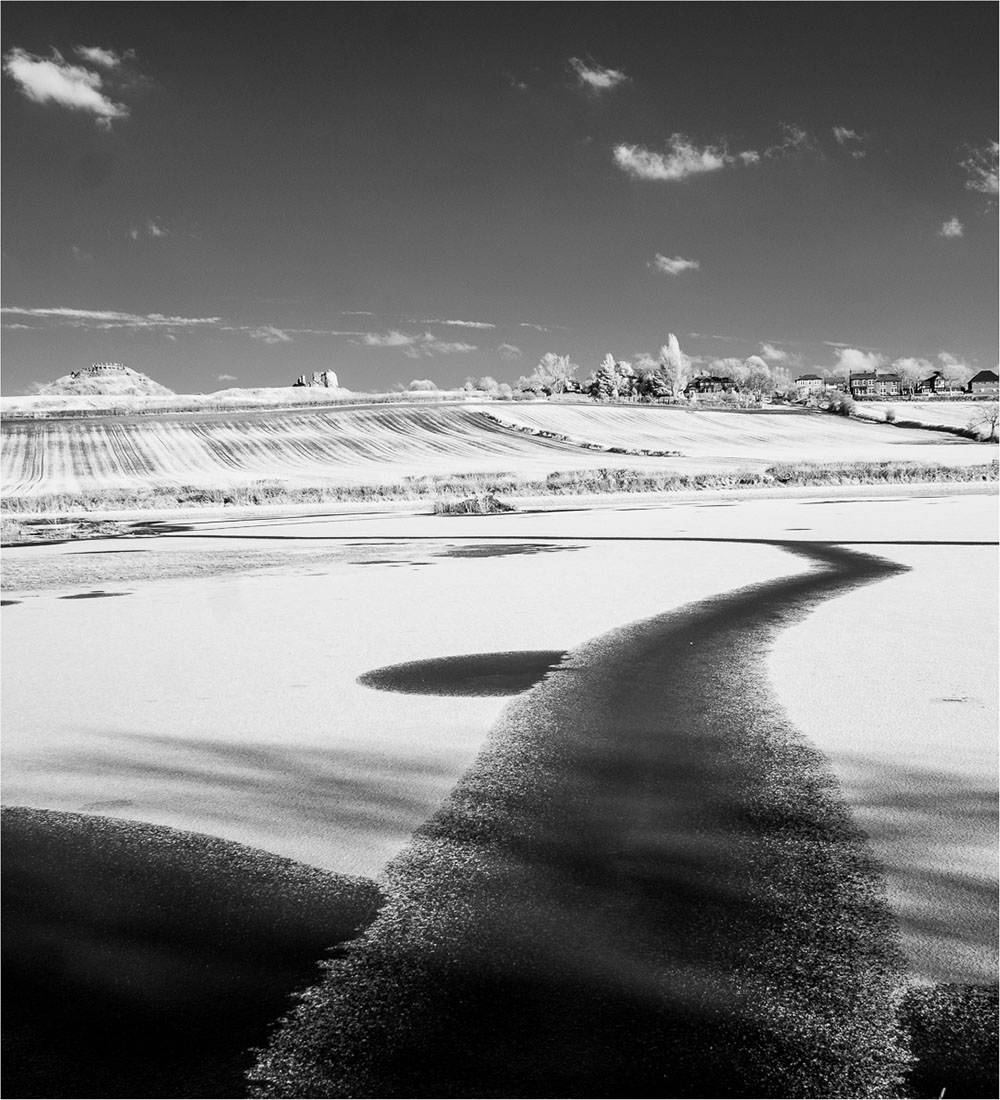
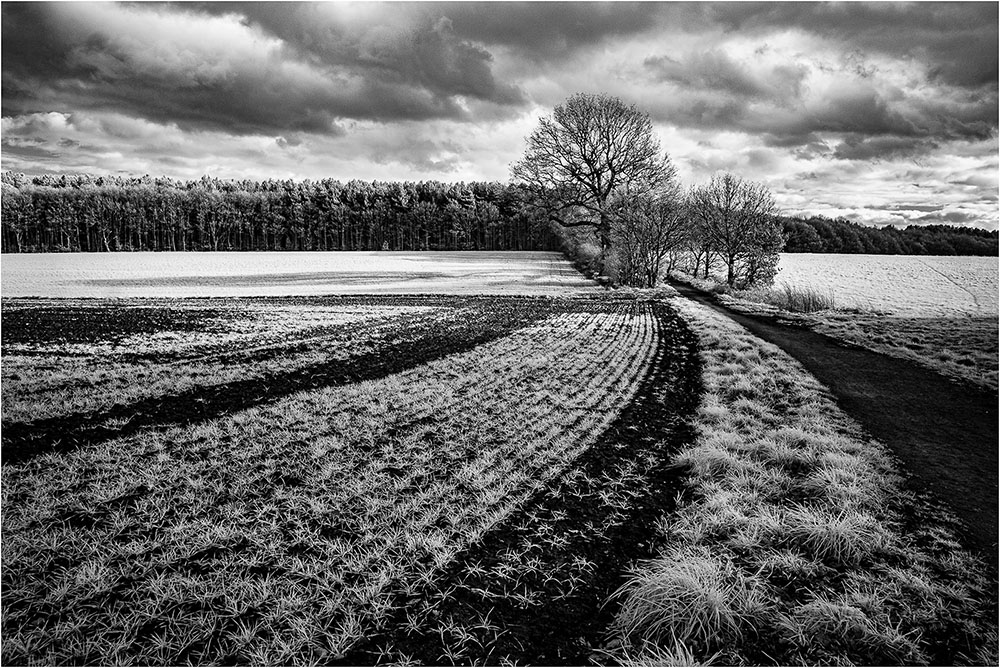
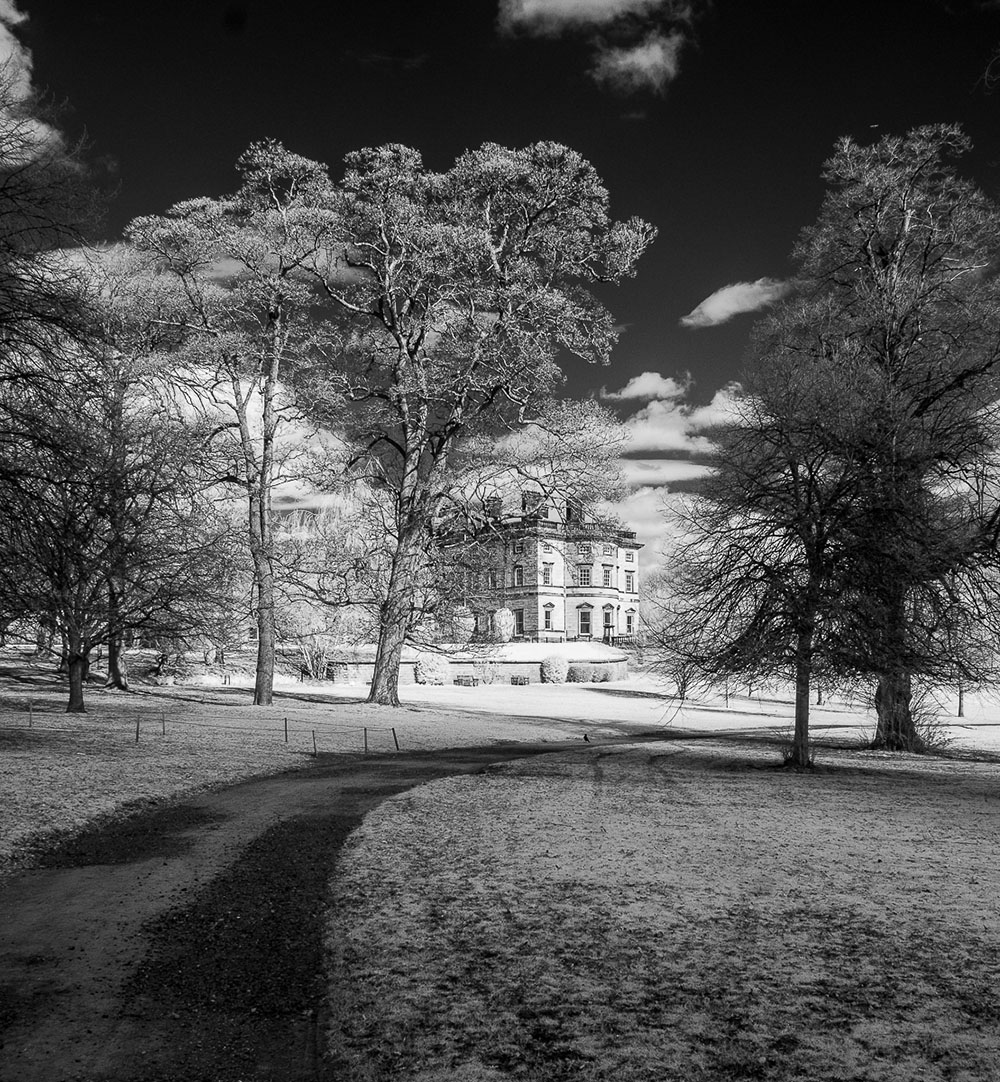
I avoided city centres, although being a lover of architectural photography, this is perhaps an avenue to explore in the future. I did take a few portraits, which revealed characteristic skin smoothing and dead eyes.
So, for those of you who are disappointed that this contribution is not about squandering thousands on camera gear, I do apologise. This project has been about following a photographic interest.
Returning to the building analogy, I would say that Wakefield Camera Club, the Yorkshire Photographic Union and the Royal Photographic Society have become my personal spirit level. They have given me the skills, encouragement, confidence, and objective critique to follow my own interests. Consequently, I thoroughly enjoyed my infrared project and if others appreciate it, that’s a real bonus.
One comment on “Into the red”